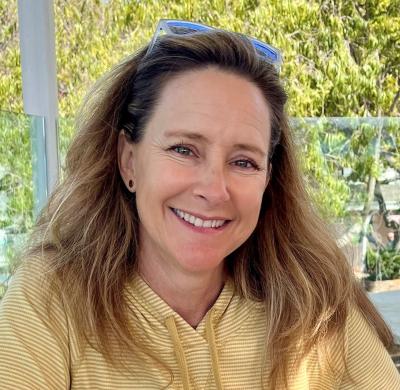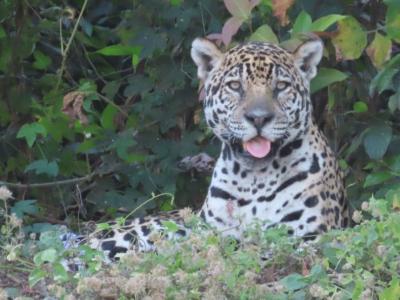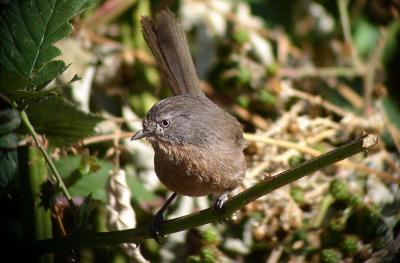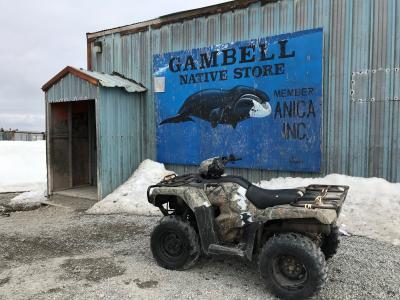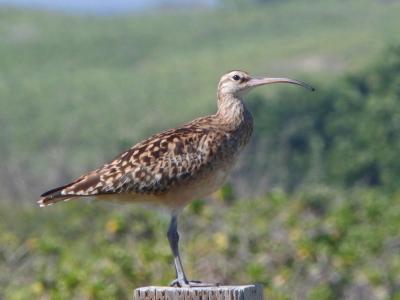Oregon in Late Summer
with Pelagic Extension
-
Aug 18-29, 2025
Rich Hoyer
Pelagic Extension to Aug 31 -
Aug 19 to Sep 1 2028
Rich Hoyer
2025
Single Room Supplement $990
Pelagic Extension: $1,360
Extension Single Room Supplement $220
2028
Tour Price to be Determined
2025
Single Room Supplement $990
Pelagic Extension: $1,360
Extension Single Room Supplement $220
2028
Tour Price to be Determined
Oregon is well known for lush ancient forests and a picturesque coastline that teems with waterbirds. This is the Oregon west of the Cascade Mountains, where most of the human population resides. Less well known are the radically different habitats and climates as one moves south and east. In the “rain shadow” of the Cascades one finds dry open conifer forests, desert-like shrub-steppe, and stark vistas of canyons and fault-block mountains, while farther south one experiences warm summers with virtually no rain. It’s this meeting of Pacific, Continental, and Mediterranean climates in astonishing proximity that gives the state of Oregon an avian diversity greater than any other area in the world at a similar latitude—especially in woodpeckers and owls. We’ll explore most of this diversity in scenic state parks on the coast, vibrant national wildlife refuges in the Willamette Valley, extensive coniferous forests on both sides of the Cascades, and open expanses of sagebrush in the eastern deserts.
(This tour can be taken in conjuction with Oregon: Birds & Theater in 2025)
Main Tour
Main Tour
Day 1: The main trip begins at 6 p.m. in Portland. Night in Portland.
Excellent birding opportunities and great leadership from Rich Hoyer. He knows the birds, where and how to find them and how to get us on them. Rich also shared is knowledge and enthusiasm for other wildlife - butterflies, other insects, mammals and snakes (we had a great experience with a gopher snake), and as well how the forest and desert environments work and the geology of Oregon. I learned a lot! Our breakfast and lunch picnics were excellent, with healthy choices and enough variety. Rich made us a chocolate mousse treat one day!The pelagic day was outstanding! The boat and crew did a great job getting us out to the birds and back safely. Bird spotters, including Rich, helpied us identify and learn about the birds. We had amazing numbers of some species and a surprise Great Shearwater, which was on the wrong ocean! -Dixie S.
Day 2: We’ll begin the tour heading south from Portland up the Willamette Valley, a major trough for the river of the same name that flows north between the Coast Range and the Cascades. Although it is the most agriculturally productive region in the state (with such diverse crops as wine grapes, irises, berries, filberts, grass seed, and Christmas trees), large stretches of riverine forest are well protected, and three major national wildlife refuges (Baskett Slough, Ankeny, and Finley) are within driving distance of each other. California Scrub-Jay, Black-headed Grosbeak, Violet-green Swallow, and Vaux’s Swift are examples of common breeding species, and the improved wetlands at the refuges have recently hosted such surprises as Black-necked Stilt, and breeding Wilson’s Phalarope and Black Tern. The large cottonwoods and riparian thickets along the Willamette River and its tributaries are home to Pileated Woodpecker, Willow Flycatcher, and the sometimes spotless oregonus race of Spotted Towhee. Night in Corvallis.
Day 3: Early this morning we’ll drive to the meadow-capped top of Marys Peak, at 4,097 feet the highest point in the Coast Range, where one can often see and sometimes even hear the Pacific Ocean 27 miles away. Northern Pygmy-Owl, Gray Jay, Red-breasted Sapsucker, and Varied Thrush are some of the forest birds we might see, but our main targets are the elusive Sooty Grouse and Mountain Quail. Both are actually common here though hard to see; late summer is the best time to look for them. Later in the day we’ll visit valley refuges and the requisite sewage ponds for migrant water birds. An evening outing to a nearby forest should yield Western Screech-Owl and possibly also Barred Owl. Night in Corvallis.
Days 4-5: Shorebird migration will be in full swing, so we’ll head a bit south and west to Florence and spend the next two days on the stunningly beautiful and rightfully famous Oregon Coast. From towering headlands and rocky shores we’ll spot Western Gull, Brandt’s and Pelagic Cormorants, and Surf Scoters while keeping an eye out for the scarce Black Oystercatcher, Black Turnstone, Surfbird, and Wandering Tattler. Amongst the scoters we may spot Rhinoceros Auklet, Marbled Murrelet, and Red-necked Grebe. We’ll check estuaries and mudflats for concentrations of migrant shorebirds which could include Western, Least, Baird’s, and Pectoral Sandpipers, loons, and Heermann’s Gulls. Nights in Florence.
Day 6: Today we head east over the Cascade Mountains. Following the Willamette River into the western foothills of the Cascade Mountains, we’ll stop to admire the lovely, rushing mountain streams while eyeing the boulders for American Dippers. A short stroll through a grove of ancient Pacific Silver Fir, Douglas-fir, and Western Hemlock could reveal mixed flocks including Brown Creeper and Golden-crowned Kinglet. As we climb the higher mountains and cross the divide, the habitat changes abruptly and dramatically, from a dripping, dense fir-hemlock rainforest to Lodgepole Pine on lava flows only a few thousand years old, to a dry, open Ponderosa Pine–Western Juniper woodland punctuated by willow- and aspen-lined streams. In these drier east-side forests we could see Red-naped Sapsucker, Pygmy Nuthatch, and Green-tailed Towhee. Five species of chipmunk are possible (though telling them apart is a challenge), and if it’s warm enough we could see some delightful butterflies, such as Golden Hairstreak and Lorquin’s Admiral, and bright blue-tailed Western Skinks are common here. Night in Christmas Valley.
Day 7: The primary birding area for this morning is the landlocked basin of Summer Lake, where numbers of gulls, avocets, stilts, and phalaropes breed and stage on their migrations. Some years the numbers of birds are staggeringly high, and we hope to witness such an unparalleled spectacle. Migrant shorebirds are also in evidence here, and we’ll especially be on the lookout for the locally breeding Snowy Plover. After a picnic lunch in the nearby hills we’ll drive past the impressive Abert Lake basin located below the rim of the same name on our way to the next hotel. Night in Burns.
Days 8-10: We’ll have three full days to explore the watersheds of the Harney Basin. Malheur National Wildlife Refuge, which encompasses the heart of this landlocked basin as well as the Donner und Blitzen River valley to the south, is located only 30 miles south of Burns. Well before we actually arrive at the refuge we’ll be birding along the route south of town. Water levels can vary greatly from year to year, but with luck roadside stops will feature ponds and lakes with many species of ducks, Clark’s and Western Grebes, and Wilson’s Phalaropes. Swainson’s Hawks will be thinking about their southward migration, while arctic-breeding Gambel’s White-crowned Sparrows may already be arriving. We’ll check the wildlife refuge headquarters, an oasis of spruce, pine, cottonwood, and elm, as well as other groves of trees such as Benson Pond and P Ranch. These isolated groves in a sea of sagebrush act as migrant traps in spring and fall, and there’s usually a family group of Great Horned Owls roosting in the trees at one of them. We’ll also check the dry upland habitats for sage and juniper specialties such as Sage Thrasher and Sage Sparrow, and we can always hope for a wandering Greater Sage-Grouse on the roadside as we also keep an eye on the cliffs and rimrock for White-throated Swift and Chukar. One of the tour highlights will be our drive to the top of wonderfully scenic Steens Mountain, a fault block mountain with Oregon’s highest road at 9,500 feet, not passable before about July 4 each year due to snow. The view of the Alvord Basin, Oregon’s driest desert, stretching 5,600 abrupt feet below, is awesome. We even have a chance of seeing Black Rosy-Finch in its only known breeding location in the state, as well as an isolated introduced population of Bighorn Sheep.
On the day between trips south to the refuge we’ll venture north into the Silvies River drainage in the superb pine-fir-larch woods of the Ochoco and Blue Mountains. Here we have an excellent chance of finding Williamson’s Sapsucker, White-headed Woodpecker, Clark’s Nutcracker, and Red Crossbill, among many other species. We’ll also make an evening visit here to look for Flammulated Owl, which though difficult to see well can be surprisingly common. Nights in Burns.
Day 11: Our drive back to Portland will take us west and north along the scenic John Day River, the second-longest free-flowing river in the lower 48 states. Stops along the way may reveal breeding birds of the coniferous forests such as Lewis’s Woodpecker and Townsend’s Warbler, and we’ll include a visit to the John Day Fossil Beds National Monument visitor center. Once we reach the freeway east of The Dalles, we’ll head downriver through the rightfully famous Columbia River Gorge National Scenic Area, where the continent’s second-largest river cuts right through the Cascade Mountains, and waterfalls and windsurfing opportunities attract many tourists. We’ll have our farewell dinner at the historic Multnomah Falls Lodge in view of the tallest falls in the state before continuing to Portland. Night in Portland.
Day 12: The main trip concludes this morning in Portland.
Newport Post-Tour Pelagic
Day 1 (12): The post-trip extension begins as we leave from our hotel in Portland in the morning and start the three-hour drive to Newport, birding along the way. Once at the coast we’ll have dinner, stock up on lunch and snacks for the boat trip and check into our hotel. Night in Newport.
Day 13: We’ll get to the Newport harbor early in the morning for our all-day boat trip, which departs around 7:00 a.m. As soon as we leave the jetties of the Yaquina River behind, we could start seeing nearshore species such as Common Murre and Pigeon Guillemot, and we’ll make a special effort to look for Marbled Murrelet as well as mammals such as Gray Whale. We’ll then motor for a couple more hours to the edge of the continental shelf, stopping whenever we see birds, such as the likely Sooty and Pink-footed Shearwaters. At the farthest point we should see Black-footed Albatross, migrant jaegers (all three species are possible), Arctic Tern, and both Red and Red-necked Phalaropes. We’ll be back in port by about 3:00 p.m., finishing the day with our drive back to Portland. Night in Portland.
Day 14: The tour concludes this morning at the Portland Airport area hotel.
Note: The information presented here is an abbreviated version of our formal General Information for this tour. Its purpose is solely to give readers a sense of what might be involved if they take this tour. Although we do our best to make sure that what follows here is completely accurate, it should not be used as a replacement for the formal document which will be sent to all tour registrants, and whose contents supersedes any information contained here.
ENTERING THE UNITED STATES: Non-U.S. citizens will need a valid passport and may need a tourist visa. Consult your nearest U.S. Embassy or consulate for details.
PACE OF THE TOUR: Most mornings will start around 6:00 a.m. (a few will start earlier) and we bird most days through lunch until mid-afternoon. Every day we’ll schedule one to two hours off at the hotel before dinner, some days even a bit more, and on a couple long days we’ll head almost directly to dinner. On a few evenings we plan on optional owling after dinner (where having a small flashlight or headlamp will be necessary).
Our longest walks may be two miles round trip. One walk we may do depending on weather is a road that is almost continually up to the top at Marys Peak at 4100 feet elevation; it is less than ½ mile each way, and a nice road (though closed to public traffic), but a walking stick would be useful. Most walking is done on roads and trails, although there will be some over uneven ground and possibly in marshy/dewy grass. Some days, especially travel days, we do more birding stops just outside the van. Sturdy footgear, waterproof if possible, is important, and a hiking stick is recommended for anyone with balance problems or weak knees. One should be prepared for long periods of standing and walking slowly, and a small travel stool is handy for those who find this tiring.
Bathroom Breaks: Breaks for restroom use will be made throughout the tour.
HEALTH: Oregon presents no real hazards to the visiting birdwatcher but certain factors must be considered.
Elevation: Some of our birding is at elevations of around 7000 feet (one day up to 9000 feet), and while we do not schedule anything even faintly strenuous at these altitudes, anyone with a history of cardiovascular or respiratory problems should be aware of the altitudinal stress. Please consult your physician.
Sun: High-altitude sun can be intense; a broad-brimmed hat, proper clothing and a strong sun block lotion are essential.
Smoking: Smoking is prohibited in the vehicles or when the group is gathered for meals, checklists, etc. If you are sharing a room with a nonsmoker, please do not smoke in the room. If you smoke in the field, do so well away and downwind from the group. If any location where the group is gathered has a stricter policy than the WINGS policy, that stricter policy will prevail.
Sea Sickness: Those participating in the pre-tour pelagic should be prepared at a minimum for big swells.
Miscellaneous: We actively look for reptiles but rattlesnakes are seldom seen. Insects are rarely bothersome, though mosquitoes may be locally numerous towards the end of the tour, varying from year to year. We recommend sturdy boots of at least ankle height as a safeguard against twisted ankles when walking over uneven terrain. A walking stick is recommended for anyone with balance problems or weak knees. Finally, participants should bring an adequate supply of any personal medications as they may be difficult to obtain during the tour.
CLIMATE: Oregon in summer has a beautiful, moderate and dry climate, but weather can vary greatly. Since we’ll be ranging from sea level on the humid coast to more than 7000 feet in the very dry rain shadow of the Cascades, expect a wide range in temperatures. Though rain is unlikely, one should be prepared for the unexpected. It could be cool, foggy and breezy on the outer coast, hot in the inland valleys, and with cool nights east of the mountains: we may experience temperatures ranging from 32° to 100° F on the tour, with averages ranging 50° to 80°F.
Our Pelagic: For the pelagic trip, even on a warm, sunny day, the air moving across the cold Pacific Ocean can be surprisingly brisk. Given the chance for spray, one should be prepared with waterproof shoes (rubber boots with good traction are ideal) as well as hat (one that won’t blow away), gloves, and wind/waterproof rain jacket and pants.
ACCOMMODATIONS: We’ll be staying at standard, comfortable motels and/or lodges throughout the tour. Two of our hotels have indoor swimming pools; all have wireless internet.
FOOD: Food will be North American standard with a chance of good seafood along the coast,
Food Allergies / Requirements: We cannot guarantee that all food allergies can be accommodated at every destination. Participants with significant food allergies or special dietary requirements should bring appropriate foods with them for those times when their needs cannot be met. Announced meal times are always approximate depending on how the day unfolds. Participants who need to eat according to a fixed schedule should bring supplemental food. Please contact the WINGS office if you have any questions.
TRANSPORTATION: With the exception of our pelagic trip (see below) we will be traveling by 12 or 15 passenger window van or minivan, depending on the group size. Participants should be able to ride in any seat in tour vehicles.
Our pelagic boat (on the pre-tour extension) will be either 50 or 55 feet long, with a capacity of at least 30 passengers; our group will be a minority among those aboard as the trip is open to the public. There will be at least one toilet, and we’ll bring our own food and drink.
2023 Narrative
In Summary
A single morning of rain – the first here in western Oregon since early June – was actually quite the welcome change from the otherwise stunningly gorgeous weather with ideal temperatures the entire rest of this year’s Oregon in Late Summer tour. A family of Mountain Quail feeding on the shoulder of the Marys Peak Road was one of the more memorable highlights, but with nearly 240 species of birds seen in such varied habitats, it was hard to choose favorites. There was the Barred Owl that flew off the side of the road fully two miles before we got to our predetermined owling location (where we also heard Northern Saw-whet Owl). Snowy Plovers blended so peacefully with their sand dune habitat at the coast, allowing us to approach quiteclosely and identify one of the color-banded individuals, a three-year-old male. A stop in a lovely patch of old-growth Big Sagebrush produced a subtly beautiful Sagebrush Sparrow. And the Common Poorwill that came in so quickly and landed so close to us was quite the surprise, providing perhaps the shortest night birding foray we’ve ever done. We made productive stops for butterflies, many dragonflies and damselflies, mammals such as Bighorn Sheep and Pronghorn, and to top them all, a gorgeous Rubber Boa stretched across a remote forest service road.
In Detail
We started our first morning birding at Ankeny National Wildlife Refuge, where water levels had been reported to be favorable for migrant shorebirds. But first we birded the ash swale habitat for forest birds, finding Common Yellowthroat and Black-capped Chickadee the most abundant species. Out attempts at working up mobs was eventually successful, bringing in a Western Tanager, a Western Flycatcher, Yellow and Black-throated Gray Warblers, and Brown Creeper. A fine surprise here was hearing a Western Screech-Owl as it tooted back from its hidden day-roost deep within the Oregon ash swale. At the main marsh overlook, we struggled to get accurate counts of the ducks and dowitchers, and we enjoyed a freshly molted juvenile Northern Harrier work the shoreline for small bullfrogs. We continued to the Monmouth sewage lagoons, where ducks were also numerous. Several migrant Red-necked Phalaropes shunned the one lone rare Wilson’s Phalarope there, and we finally picked out some Vaux’s Swift from the several species of swallow. After our first of many picnic lunches at Helmick State Park, where we were treated to Sharp-shinned and Cooper’s Hawk flying together, we made quick work of Adair county park to find the resident Acorn Woodpeckers. We finished the day at the Philomath sewage lagoons, where a fun sighting was a juvenile Peregrine Falcon that strafed the ponds, almost catching a Red-necked Phalarope, which escaped by diving completely under water from flight.
Our second full day was our best chance for quail and grouse as we drove to the top of Marys Peak at dawn. With nothing on the road on the way up, we returned a few miles to find a small family group of Mountain Quail right where we had come from. Sooty Grouse weren’t to be seen, but at least we weren’t skunked. Huge numbers of mostly Type 3 Red Crossbills were all over the peak, and we hiked to the top to find that the very lost Clark’s Nutcrackers reported the previous few days were still there. After lunch we drove up the Alsea River to its headwaters, with stops resulting in American Dipper, MacGillivray’s Warbler, and Wrentits. After a quick pass through Finley National Wildlife Refuge and dinner in town, we saw out daylight with the amazing spectacle of nearly 2000 Vaux’s Swifts entering a chimney in downtown Corvallis. We then drove north of town to the MacDonald-Dunn forest where a Western Screech-Owl soon responded to whistled imitations from a visible perch.
We gave Marys Peak grouse one last chance (no luck), then started birding in earnest with another check of the Philomath sewage lagoons; a Solitary Sandpiper there was the best prize. We then drove through the rainy morning, headed to the coast. The weather there was nicer, and along the upper Yaquina estuary we stopped to find four locally rare Common Terns on mud spit loafing with unusually far inland Brown Pelicans. We were lucky that Band-tailed Pigeons were landing in the trees nearby instead of just flying over in the distance. Once on the outer coast, we easily added several gulls and all the cormorant to our list, and a walk around the Marine Science Center yielded our only Short-billed Dowitchers. We made a special attempt for “rockpeckers’ and had great success at Seal Rocks, finding Wandering Tattler, Surfbird, Black Turnstone, and Black Oystercatcher all in the same spot. Another highlight there was a flock of Bushtits at close range in the dense coastal chaparral.
Our full day in Lane County began in the Siltcoos River area, where Type 10 Red Crossbills called overhead during our peaceful picnic breakfast. On the beach were many Sanderling, but after a short walk we found the concentration of Snowy Plovers. Some of the adults had color bands, and by texting with Kathy Castelein and Dave Lauten we found that the one we photographed was a three-year-old male who breeds regularly in the area. We spent some time walking out the south jetty of the Siuslaw river, admiring the male-chick Common Murre pairs in the channel and noticing how different their croak and whistled voices were. A pair of Wandering Tattlers allowed close approach, while a single American Pipit approached us as we stood on the jetty. We then worked our way north along the coast, birding a bit of coastal spruce forest where a Pacific Wren showed nicely and both types 3 and 4 Red Crossbills called overhead. We tallied many Surf Scoters at nearly every overlook and beach, but with some effort we found just one or two Red-necked Grebes at most stops as well. After dinner we headed to a tried-and-true owling spot, but when Barred Owl flew off the side of the road, we made an early stop and managed to get wonderful looks as this curious individual. With much patience and waiting, we finally heard the barks of a Northern Saw-whet Owl at the usual spot as bats foraged above the forest canopy.
We got a head start for the long drive to the east of the mountains by picnicking at a campground in the Coast Range. Birds were really quiet in the campground, but at the nearby bridge, migrant Western Tanagers and resident Red-breasted Sapsucker appeared right on cue. On the east side of the divide, a huge concentration of migrant Violet-green Swallows on the power lines was fun to see, while a long-staying pair of Trumpeter Swans were on the old log ponds. We saw our only Pileated Woodpeckers and Hutton’s Vireos at our last stops in the Coast Range before we entered the Willamette Valley at Fern Ridge Reservoir. The lake’s surface was dotted with many Clark’s and Western Grebes, some doing pair-bonding displays, but we didn’t have time to stay long. Next was a short stop at Rich’s house and garden, Calliope Corner, where we would stock up on veggies for the picnics and see our only Rufous Hummingbirds of the tour. We arrived in time for lunch at Salt Creek Falls, where the bugs beat out the birds – Golden Hairstreak and Shadow Darner were the highlights, though our second American Dipper could be seen way down the canyon below the impressive falls. Before long, we found ourselves in the wide-open expanses of the westernmost Great Basin, amidst sagebrush steppe and circular crop fields of alfalfa and hay. Sage Thrasher was our first new bird here, and it posed nicely in a fencerow. We then added Loggrehead Shrike and Prairie Falcon near Cabin Lake (though in the afternoon wind, the bird bath was vacant), made a short stop at the amazing Fort Rock, and stopped for many Red-tailed Hawks on the way into Christmas Valley, finding among them our first Swainson’s Hawks and Ferruginous Hawk.
Summer Lake State Wildlife Area and Lake Abert showed us today that the desert is instant bird – just add water. Before breakfast we first made a couple birding stops, one in a patch of old-growth big sagebrush that looked promising, and it indeed gave us a Sagebrush Sparrow. Another quick detour to an old burn was full of Green-tailed Towhees among other birds, but then we headed to the water in the valleys. The prize at Summer Lake was a rare inland Parasitic Jaeger that pursued the Forster’s Terns and California Gulls, once coming to within only a few yards from us. We heard and then glimpsed a Virginia Rail (there were probably dozens of them hiding in the marsh), and among the throngs of post-breeding waterfowl were a few migrant Greater White-fronted Geese passing through from the high Arctic. The numbers of gulls, American Avocets, Eared Grebes, Red-necked Phalaropes, and ducks at Lake Abert were impossible to fully assess, and the only truly accurate number on our eBird checklist for here was the single Golden Eagle we watched at length as it cruised the high rimrock, perching a few times.
Our full day in and around Malheur National Wildlife Refuge began with a drive down a side road where Burrowing Owls had apparently already departed their territory, but Loggerhead Shrike and Sage Thrasher were still around. Just as we approached the refuge headquarters, a handsome drake Ring-necked Pheasant sauntered across the road. Black-chinned Hummingbirds were fighting over feeders, and though passerine migrants were at first quite scarce, we eventually ended up following a nice little group that included Townsend’s and Black-throated Gray Warblers, Warbling Vireo, and Western Tanager, among others. A White-breasted Nuthatch here was very out-of-place. We next birded Benson Pond, which also had a nice smattering of migrants, such as a Gray Flycatcher, a very confiding Olive-sided Flycatcher, a sneaky but very visible Yellow-breasted Chat, and a few Brewer’s Sparrows. We took our time driving down the Center Patrol Road, arriving in time for lunch at P Ranch. Walking around here, we snagged one of the season’s last Eastern Kingbirds as it called and flew over. We took the scenic drive back to Burns via Diamond Craters and a raptor-rich part of the highway where a Ferruginous Hawk perched on a pole was lovely sight to behold. After dinner we gave Flammulated Owls a very honest attempt in the forests north of Burns, but none were willing to vocalize on what otherwise seemed to be a perfect night for owling.
With a full day to explore the varied coniferous forests north of Burns, we had our work cut out for us to find several species of woodpecker missing from our list. Red-naped Sapsucker was the first to fall at Idlewild Campground, where we also had very satisfying views of Cassin’s Vireo, Pygmy Nuthatch, and our only Dusky Flycatcher. A very nice surprise was an American Goshawk that flushed from the ground and perched a few times for scope views before vanishing into the forest. Checking likely looking patches of burned trees, we lucked into a lone Black-backed Woodpecker, while only one of many stops in perfect habitat resulted in a gorgeous White-headed Woodpecker. Where we finally had a lovely mix of older conifers and quaking aspen, a Williamson’s Sapsucker appeared as if on cue. We saw a nice variety of butterflies, including the nearly impossible fritillaries, but a female Rubber Boa stretched out across the road was the best sighting of the whole day for some of us. We had had a long day but drew it out anyway with a detour to Chickahominy Reservoir, where birders had reported a nice collection of shorebirds. We caught up with Pectoral Sandpiper and nearby saw a sudden emergence of Common Nighthawks, our only ones of the tour.
On our next-to-last day, we had a lovely picnic breakfast at Frenchglen, and though there were few migrant warblers, more than a dozen Western Tanagers and a few Black-headed Grosbeaks were in evidence in a plum tree by the houses behind the hotel. Our second Yellow-breasted Chat and a Lincoln Sparrow were in the thicket behind the school. Hopes were high for our day up on Steens Mountain, and we put in some hard work to find the rosy-finches, but who can complain about spending three hours in one of the most beautiful places on Earth even without rosy finches? A pair of White-breasted Nuthatches among the rocky crags well above treeline was a very strange sight. More expected and exhilarating was a Prairie Falcon that blasted by very close at eye-level. An immature Golden Eagle was also memorable as it drifted above the glacially carved Gunsight Notch, a feature we had seen from many miles away. Horned Larks graced the alpine meadows, mostly done with their wildflowers with a few stray lupine and others still blooming, and a few slow mountain grasshoppers seemed like they were tripping over their own feet as they tried to hop away. We made a pass by the refuge headquarters on the way back to Burns, noting a single Lewis’s Woodpecker, our 11th and final woodpecker species. We squeezed in one last night birding stop, but it didn’t take much – a Common Poorwill responded to playback almost immediately, landing just a few yards away, and within minutes we were back at the hotel as if we had never even left.
With a long drive back to Portland for our last day, we started with a picnic breakfast well into the drive in the middle of the Silvies Ranch, pausing for an adult Bald Eagle and a Prairie Falcon on a power pole on the way. A White-headed Woodpecker in the isolated grove of aspen and non-native deciduous trees was very out-of-place, but still very nice to see so well. It was joined by two Red-naped Sapsuckers and several Mountain Bluebirds that were more expected. John Day Fossil Beds National Monument was a fascinating and beautiful detour, especially the Painted Hills sector where we had our picnic lunch. A quick stretch stop resulted in a Canyon Wren, one of the tour’s only birds in Wheeler County, and as we blasted down I-84, Osprey were very much in evidence all along the magnificent Columbia River. We quickly took in the sights of Multnomah Falls, adding one last American Dipper to the list, and then paused at Crown Point for one of the most iconic Columbia River Gorge views that pretty much summed up a fabulous tour in a gorgeous place.
Richard Hoyer 2023
Rich knows Oregon and its birds and had a great plan to maximize our birding experience.
- John D. on Oregon in Late Summer
Excellent birding opportunities and great leadership from Rich Hoyer. He knows the birds, where and how to find them and how to get us on them. Rich also shared is knowledge and enthusiasm for other wildlife - butterflies, other insects, mammals and snakes (we had a great experience with a gopher snake), and as well how the forest and desert environments work and the geology of Oregon. I learned a lot! Our breakfast and lunch picnics were excellent, with healthy choices and enough variety. Rich made us a chocolate mousse treat one day!The pelagic day was outstanding! The boat and crew did a great job getting us out to the birds and back safely. Bird spotters, including Rich, helpied us identify and learn about the birds. We had amazing numbers of some species and a surprise Great Shearwater, which was on the wrong ocean!
- Dixie S. on Oregon in Late Summer
This tour is limited to seven participants with one leader.



































